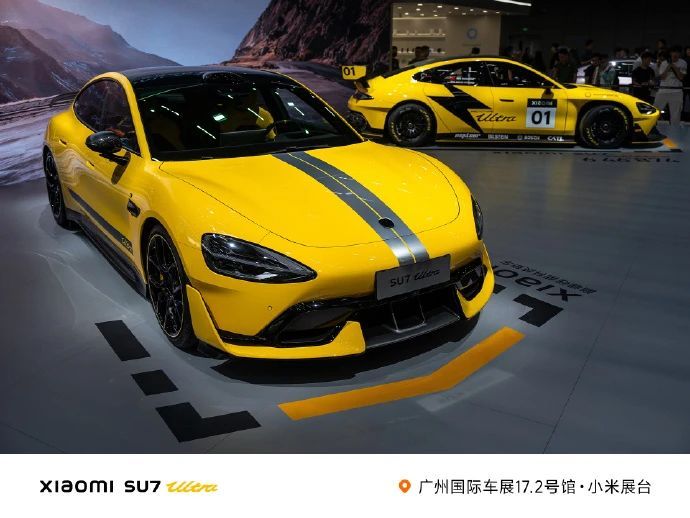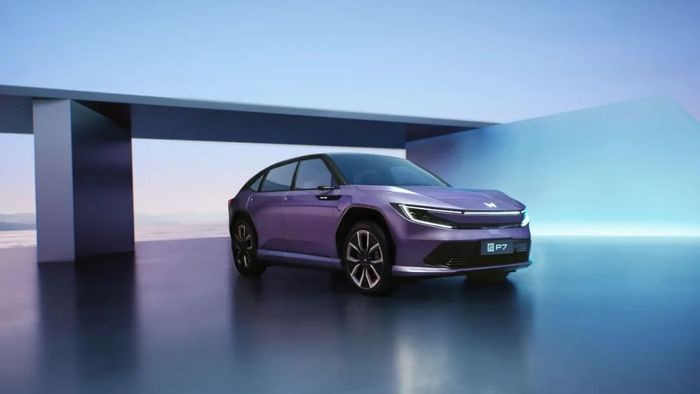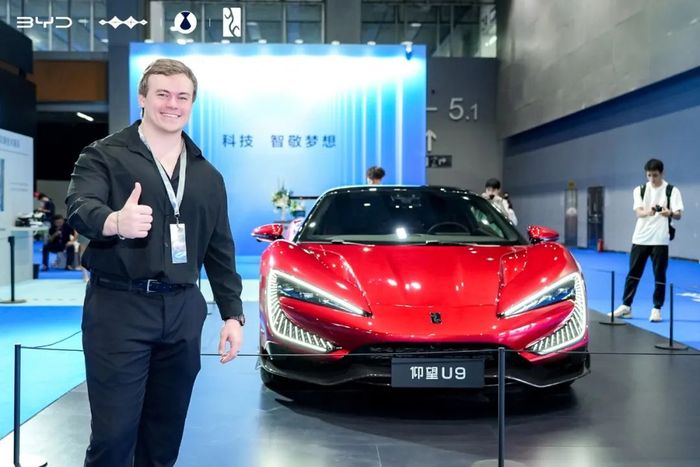The Guangzhou Auto Show serves as a stage for car companies to showcase their innovations. It also acts as a battleground where companies strive to stand out in this year-end competition. This year’s show features 78 global premieres and a total of 1,171 vehicles, including 512 electric vehicles. These numbers set new records. Despite the rise of various communication channels, the importance of auto shows in corporate marketing decreases. However, as the last major auto show of 2024, we can still observe key industry trends. This article highlights new trends in technology, models, and pricing from the show. In technology, companies focus on smart driving. The industry agrees that smart driving is crucial for the second half of the electric vehicle race. At the Guangzhou Auto Show, smart driving becomes the main stage for many companies to showcase their technologies. New players like Xiaomi, attending the show for the first time, and companies like Li Auto and Xpeng, which have no new vehicle launches, actively promote their smart driving technologies. Lei Jun demonstrated the Xiaomi SU7’s parking capabilities a day before the show. Zeekr held its first smart driving technology conference at the event. Traditional automakers like Great Wall and SAIC’s Zhiji also announced their latest advancements in smart driving. Based on the development of smart driving features, ‘Dingjiao One’ categorizes companies into three tiers. Ideal, Xiaopeng, Xiaomi, and Huawei prioritize the “parking space to parking space” feature. They plan to launch it by the end of 2024. This feature allows vehicles to navigate autonomously from one parking space to another. It includes tasks like entering and exiting parking spaces, recognizing gate openings, U-turns, and lane selection. Previously, users had to drive out of parking lots onto public roads to activate smart driving. Skipping this step poses challenges, especially in underground parking with poor signal. At the auto show, Ideal revealed its new generation of smart driving technology. It introduced the end-to-end + VLM dual system. The OTA 6.5 version will roll out by the end of November. It adds features like parking space to parking space driving and R-MAI rear acceleration suppression. Xiaopeng announced its parking space to parking space feature will enter testing on November 15. Data from early users of the Xiaopeng P7+ shows that NGP is a key factor in their purchase decisions. Xiaomi plans to start a targeted internal test for its end-to-end smart driving, including the parking space feature, on November 16. It will launch a pioneer version by the end of December. Additionally, Lei Jun announced that Xiaomi’s 100,000th car rolled off the line on November 13, just 230 days before its official sale.
Huawei also attracts attention. The company has not yet announced the exact timeline for the Huawei ADS 3.0 parking-to-parking feature. Industry insiders expect it around the end of November. Li Auto, Xpeng, Xiaomi, and Huawei rank among the top companies in China’s smart driving computing power. Recent data shows Xiaomi’s highest computing reserve at 8.1 EFLOPS. HarmonyOS has 7.5 EFLOPS of cloud computing power. Li Auto’s cloud computing power stands at 6.83 EFLOPS, expected to reach 10 EFLOPS by the end of this year. Xpeng currently has 2.51 EFLOPS and aims for 10 EFLOPS by 2025. According to ‘Dingjiao One’, adding 1 EFLOPS of computing power requires about 370 million yuan. This indicates that these companies will spend tens of billions on computing power. The second tier focuses on whether the no-map urban driving feature will launch nationwide. This group includes Zeekr, ZhiJi, Great Wall, and Jiyue. Zeekr’s plans closely align with the first tier. At an auto show, they announced that the no-map urban NZP will fully roll out to users by the end of 2024. The parking-to-parking feature will begin phased rollout in January 2025 for various road types and achieve nationwide coverage by the second quarter. ZhiJi Automotive collaborates with Momenta to accelerate technology deployment while strengthening external partnerships. By October 2024, ZhiJi’s no-map urban NOA will reach all models equipped with the Nvidia Orin platform and LiDAR. At the auto show, ZhiJi, Nvidia, and Momenta announced a partnership. The first batch of Nvidia Thor chip smart driving solutions will launch in ZhiJi production models in 2025. Great Wall Motors announced its full-scenario NOA feature will launch nationwide on November 15. Additionally, Great Wall’s new cockpit system, Coffee OS 3.1, will introduce features like the navigation desktop, NOA reminders, and smart driving island. Jiyue announced it will push pure visual, image-free advanced driving features to nationwide users by the end of 2024. It also launched two new models: the AI-driven supercar Jiyue ROBO X and the Jiyue 07 Passion version. Other car companies progress slower but show their commitment to smart driving at the Guangzhou Auto Show. Leap Motor announced it will equip the Leap B10 and other LEAP 3.5 models with high-speed and urban advanced driving features based on an “end-to-end” large model in the first half of 2025. BYD launched the Equation Leopard 8 with Huawei’s Qian Kun driving system. Hongqi announced pre-sales for the pure electric SUV Tian Gong 08, featuring DJI’s end-to-end driving algorithm. The new energy vehicles from BBA awaken, while domestic brands battle hybrids. Among the 1,171 vehicles displayed at the Guangzhou Auto Show, 512 were new energy vehicles, making up 43.7%. This figure surpasses last year’s proportion and aligns with industry trends. Since July 2024, China’s new energy vehicle retail penetration rate has exceeded 50% for four consecutive months. At the auto show, two major trends emerged. First, foreign brands criticized for slow electrification sped up their transformation. They established new energy vehicle brands or launched new product lines, many featuring local smart supply chains. Focusing on BBA, Audi underwent significant changes. It collaborated with SAIC to create the “AUDI” brand, abandoning the four-ring logo. It showcased the pure electric concept car AUDI E, equipped with Momenta driving technology. The production version will launch mid-next year. FAW Audi partnered with Huawei to display the pure electric SUV Audi Q6L e-tron. Mercedes-Benz introduced the pure electric G-Class off-road vehicle priced at 2.17 million yuan and the new pure electric EQE. Before the show, it completed the global debut of L2++ image-free driving in Shanghai. BMW announced it will produce the new BMW 5 Series, featuring the integrated V2X module, starting January 2025. It also showcased the M brand’s first hybrid sedan, the M5, priced at 1.4689 million yuan. GAC Toyota launched the all-electric SUV, the Platinum Smart 3X, featuring Momenta’s end-to-end smart driving. Dongfeng Nissan unveiled the all-electric sedan N7, equipped with Momenta’s smart driving. GAC Honda introduced a new electric brand, “Ye P,” showcasing the all-electric models Ye P7 and Ye GT Concept.
After collaborating with successful Chinese smart driving suppliers like Huawei and Momenta, Audi, Toyota, and Nissan no longer worry about the lower limits of their smart driving functions. However, they must truly let go and work well with suppliers to unlock the upper limits of these capabilities. Foreign car brands feel anxious behind the push for new energy and intelligence. In the first three quarters of 2024, brands like Volkswagen, Honda, and Toyota saw sales declines in the Chinese market. In contrast, local Chinese brands experienced rapid sales growth. As sales shift, foreign brands must accelerate their transformation. Details can be found in the previous article “Selling Struggles: BBA Brands Start to ‘Learn from Others’.” The second trend shows that some domestic brands, originally focused on pure electric vehicles, are now launching plug-in hybrid models. Many companies are entering the plug-in hybrid market. The new energy vehicle brand Avita, co-created by Changan Automobile, Huawei, and CATL, launched its first range-extended model, Avita 07, in September. At the Guangzhou Auto Show, it introduced its third range-extended hybrid model, Avita 11 Ultra, with a pre-sale price of 299,900 yuan (41410$). Additionally, electric vehicle companies like Xpeng Motors, GAC Aion, and Zhiji Motors have officially announced plans to launch plug-in hybrid models. This trend follows the growing sales of plug-in hybrids. In 2021, plug-in hybrids accounted for only 17.4% of new energy passenger car sales in China. By January to August this year, that figure rose to 40%. The rise of hybrids stems from the large number of traditional car owners in third- and fourth-tier cities among new energy vehicle consumers. These users prefer the long range and low anxiety of plug-in hybrids. Technological advancements have also addressed past shortcomings, such as short range and high fuel consumption. For car companies, plug-in hybrids allow for more competitive configurations and pricing. However, as every carmaker adopts this “secret weapon,” competition will intensify. Whether they can truly boost sales remains uncertain. Price cuts continue. Huawei and Xiaomi aim for the high-end market. Price wars dominate the automotive industry in 2024. This trend carries over to the auto show. SAIC Volkswagen launched the Weiran, a mid-size fuel MPV, with a starting price of 199,900 yuan (27600$), nearly 90,000 yuan (12430$) lower than the previous model. BAIC’s new Alpha T5 starts at 123,800 yuan (17100$), down 32,000 yuan (4420$) from the suggested price. Cadillac announced the XT6 at a limited-time price of 349,900 yuan (48320$), a 100,000 yuan (13810$) drop from the official price of 449,900 yuan (62130$). Price cuts are no longer surprising. More noteworthy is the push from some carmakers into the high-end market. Notable examples include Hongmeng Zhixing, BYD, and Xiaomi. Some are creating new high-end brands, while others enhance existing brands with premium products. Hongmeng Zhixing follows the first route. It will launch the million-level sedan, ZunJie S800. ZunJie is a luxury electric vehicle brand created by Huawei and JAC Motors. At the Guangzhou Auto Show, Yu Chengdong announced, “ZunJie will officially launch on November 26 at the Huawei event, alongside the Mate70 phone.” The booth features a dedicated area for ZunJie, enclosed in black glass. During the auto show, ZunJie S800 showcased to media. Reports indicate its design differs significantly from the other “Three Realms.” It features new star-shaped light strips in the headlight area, door handles, and taillights. The body combines silver and purple colors, resembling the style of its benchmark brand, Rolls-Royce. However, ZunJie’s biggest selling point remains undisclosed. Yu Chengdong stated, “The most essential elements are inside the car. We will reveal more later.” Currently, Hongmeng Zhixing’s brands, Wenjie, Zhijie, and Xiangjie, cover the SUV and sedan market from 200,000 to 600,000 yuan (82850$). Due to the high costs of Huawei’s smart configurations, Hongmeng Zhixing struggles to enter the market below 200,000 yuan (27620$). Thus, launching the million-level “ZunJie” brand makes sense. Another noteworthy brand is BYD. It began pre-sales for the Yangwang U7 at the Guangzhou Auto Show, with a deposit of 20,000 yuan (2760$), but it did not disclose the price. Previously, the Yangwang brand launched the Yangwang U8 priced at 1.098 million yuan and the Yangwang U9 priced at 1.68 million yuan.
Data from Dongche Di shows that monthly sales of the Yangwang U8 dropped from over 1,000 at launch to 265 in October. Despite the decline, this figure remains respectable for a super luxury model. In comparison, from January to August 2024, Maserati and Aston Martin sold 840 and 199 units in China, respectively. McLaren sold only 19 cars. In September 2024, Bentley, Ferrari, and Lamborghini sold 229, 77, and 49 units in the Chinese market. After the Yangwang U8, BYD plans to launch the slightly lower-positioned Yangwang U7. This strategy enhances the high-end image of the Yangwang brand and leverages various advanced technologies developed by BYD Group. The Yangwang U7 will feature the four-motor independent drive technology “Easy Four Square Platform” and the new body control system “Cloud Chariot-Z.” Xiaomi is also making strides. It showcased the Xiaomi SU7 Ultra prototype, which set a record of 6 minutes and 46.874 seconds on the Nürburgring Nordschleife, making it the fastest four-door car globally. The production version of the Xiaomi SU7 Ultra will retail for 814,900 yuan (112530$). Lei Jun announced that next year, Xiaomi’s SU7 Ultra will challenge major national tracks and continue to compete at the Nürburgring. In his 2023 annual speech, he emphasized the need for Xiaomi to pursue high-end products. He urged his colleagues, “Only by going high-end can we push for breakthroughs in technology and secure our future.” He believes that the high-end market is essential for Xiaomi’s growth and survival. Compared to smartphones, Xiaomi’s automotive efforts progress faster. Some users criticized the SU7 Ultra as “unaffordable.” This may reflect Xiaomi’s strategy to establish a high-end image early on, creating future pricing flexibility. Unlike Xiaomi smartphones, which struggled to enter the high-end market years after their launch, Xiaomi cars aim for a more immediate high-end presence. Gangtise’s research shows a split in the current automotive market. Both low-end and high-end vehicles continue to grow. For companies with established volume models, exploring the high-end market is a necessary step. However, with changes in the macro environment and shifts in consumer structure, automakers must strengthen their brand power and uniqueness to convince customers to invest in high-end vehicles. The Guangzhou Auto Show is ongoing. With just over 40 days left until the end of 2024, automakers will seize the last opportunity to sprint ahead. Who can win this big test will soon be revealed.


